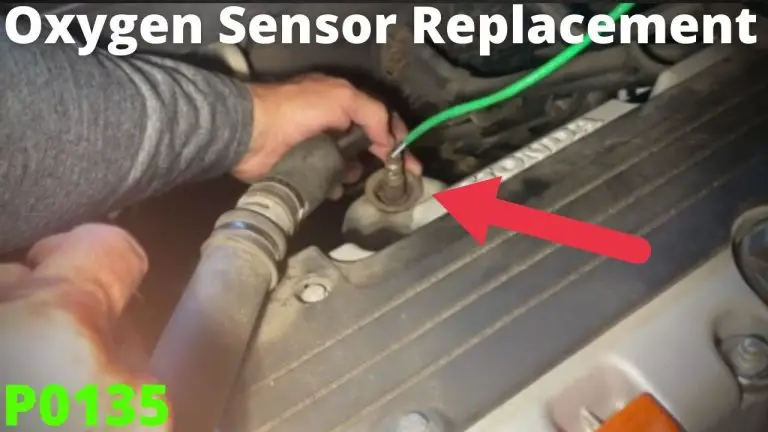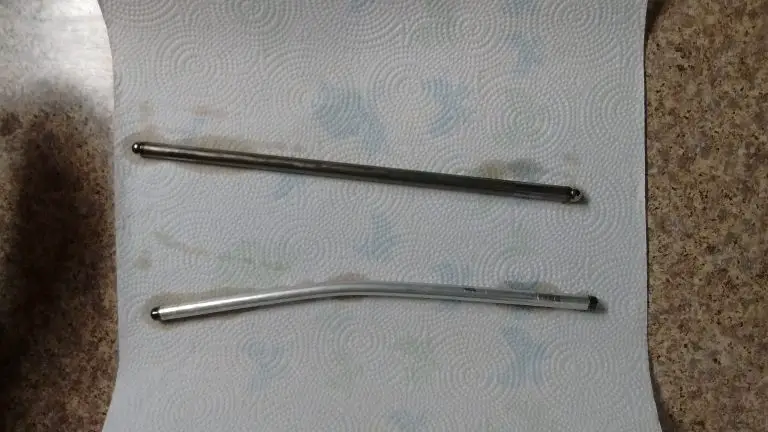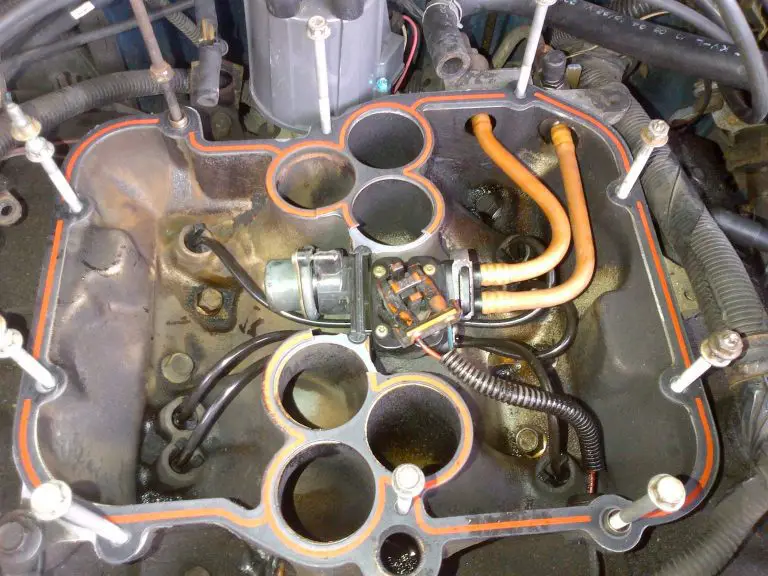6.7L Powerstroke High Pressure Fuel Pump Failure Symptoms (Update)
For diesel engine enthusiasts, the PowerStroke 6.7 is undoubtedly a powerhouse known for its remarkable performance and towing capabilities. Central to its functioning is the high-pressure fuel pump, a critical component responsible for supplying fuel at precise pressures to achieve efficient combustion. While this component plays a pivotal role in the PowerStroke 6.7’s performance, like any other mechanical part, it is susceptible to wear and tear.
Recognizing the symptoms associated with a malfunctioning high-pressure fuel pump is crucial for maintaining the engine’s optimal performance and preventing potential issues down the road. As a responsible vehicle owner or a diesel technician, being well-informed about these symptoms can save you from costly repairs and ensure the longevity of your engine. The high-pressure fuel pump in a Powerstroke 6.7 is a vital component that ensures the engine receives the correct fuel supply for optimal performance. The high-pressure unit pressurizes the diesel fuel to around 2,000 PSI, allowing for precise fuel delivery into the engine’s combustion chambers.
Similar to how a typical car tire is inflated to 30 PSI for context, this high pressure permits the fuel injectors to pulse fuel into the engine with the utmost accuracy. Over time, this pump can experience issues that may affect the engine’s efficiency and overall operation. One of the primary symptoms of a failing high-pressure fuel pump is engine misfires. If you notice a sudden loss of power, rough idling, or a significant drop in acceleration, it could be a result of insufficient fuel being supplied to the engine’s combustion chambers. Understanding these signs and addressing them promptly can help maintain your engine’s performance and prevent further complications.
In this blog post, we will dive into the world of the Powerstroke 6.7 high-pressure fuel pump and explore the common symptoms that indicate a potential problem. From subtle performance issues to noticeable warning signs, understanding these symptoms will empower you to take prompt action, whether it involves seeking professional assistance or performing necessary maintenance procedures yourself.
Join us as we unravel the mysteries of the PowerStroke 6.7 high-pressure fuel pump and equip you with the knowledge needed to keep your engine running smoothly and efficiently. Let’s delve into the details and ensure your PowerStroke 6.7 continues to roar with power!
6.7L Powerstroke High-Pressure Fuel Pump Failure Symptoms: Listen to Your Engine’s Woes
The 6.7L Powerstroke engine is a workhorse, but even the toughest engines can succumb to wear and tear. The high-pressure fuel pump (HPFP), a vital component, can malfunction over time, leading to a domino effect of performance issues. Here’s how to identify the telltale signs of a failing HPFP:
1. Hard Starts and Extended Cranking:
A healthy HPFP ensures a steady flow of fuel at high pressure for optimal combustion. When it weakens, delivering enough fuel for a smooth start becomes a struggle. You might experience extended cranking times or even difficulty starting the engine altogether.
2. Lack of Power and Performance:
The HPFP directly impacts the engine’s power delivery. If it’s failing, your Powerstroke might feel sluggish and unresponsive when accelerating. You might also experience a noticeable decrease in towing capacity or uphill performance.
3. Rough Idle and Engine Shudder:
An inconsistent fuel supply due to a failing HPFP can cause the engine to run rough, especially at idle. You might feel vibrations or shuddering throughout the vehicle, indicating the engine is struggling to maintain a smooth combustion process.
4. Check Engine Light Illumination:
The engine computer is constantly monitoring various parameters, and a failing HPFP can trigger the dreaded check engine light. Don’t ignore this warning sign! Have the fault codes scanned by a qualified mechanic to pinpoint the exact issue.
5. Reduced Fuel Economy:
A failing HPFP can lead to inefficient fuel delivery, causing the engine to work harder to maintain power. This translates to a decrease in fuel economy, meaning you might need to visit the gas station more frequently.
6. Unusual Noises:
Listen closely to your engine for any abnormal noises. A failing HPFP might produce whining, ticking, or clattering sounds, especially during acceleration or under load. These noises can be a warning sign of internal wear and tear within the pump.
Smoke Signals: Not Always a Good Sign:
While black smoke coming from the exhaust can sometimes indicate a fueling issue, it’s not a specific symptom of a failing HPFP on a 6.7L Powerstroke. Black smoke often points towards injector problems or incomplete combustion due to other issues.
Early Detection is Key:
If you experience a combination of these symptoms, it’s crucial to address the issue promptly. Ignoring a failing HPFP can lead to further problems down the road, potentially causing damage to other fuel system components or even engine components that rely on proper fuel delivery.
Consult a Qualified Mechanic:
Diagnosing and repairing a high-pressure fuel pump failure requires expertise. Seek help from a qualified mechanic experienced with diesel engines, especially those familiar with the intricacies of the 6.7L Powerstroke. They can accurately diagnose the problem and recommend the appropriate repair solution.
By being attentive to the warning signs and taking timely action, you can ensure your 6.7L Powerstroke continues to perform at its best for miles to come.
Signs Of A 6.7 Powerstroke High-Pressure Fuel Pump?
The high-pressure fuel pump in a Powerstroke 6.7 is a vital component that ensures the engine receives the correct fuel supply for optimal performance. However, over time, this pump can experience issues that may affect the engine’s efficiency and overall operation. Here are some signs that could indicate a problem with the high-pressure fuel pump in your 6.7 Powerstroke:
1. Engine Misfires
One of the primary symptoms of a failing high-pressure fuel pump is engine misfires. If you notice a sudden loss of power, rough idling, or a significant drop in acceleration, it could be a result of insufficient fuel being supplied to the engine’s combustion chambers.
2. Difficulty Starting
A faulty high-pressure fuel pump may lead to difficulties in starting the engine. You might experience extended cranking times or even intermittent starting issues. This can be due to inadequate fuel pressure preventing the engine from firing up promptly.
3. Decreased Fuel Efficiency
A decline in fuel efficiency is another indicator of a potential problem with the high-pressure fuel pump. If you find yourself refueling more frequently or notice a decrease in mileage, it could be due to improper fuel delivery, resulting in inefficient combustion.
4. Increased Exhaust Emissions
A malfunctioning high-pressure fuel pump can cause an imbalance in the air-fuel mixture, leading to increased exhaust emissions. If you observe excessive black smoke or a strong smell of unburned fuel from the exhaust, it may be a sign of a fuel pump issue.
5. Illuminated Check Engine Light
The vehicle’s onboard diagnostics system may detect irregularities in the fuel system and trigger the check engine light. It is essential to have the vehicle scanned for error codes to pinpoint the specific issue with the high-pressure fuel pump.
What happens when a high pressure fuel pump fails?
When a high-pressure fuel pump fails in a 6.7 Powerstroke, it can lead to a range of symptoms that indicate issues with fuel delivery, pressure, and combustion efficiency. These symptoms include difficulty starting or a no-start condition, reduced engine power and acceleration, engine misfires, decreased fuel efficiency, and an illuminated check engine light. These warning signs are clear indicators that the high-pressure fuel pump is not functioning properly.
In essence, a failing high-pressure fuel pump hampers the crucial task of injecting fuel into the combustion chamber. As a result, the engine may struggle to start or fail to start altogether. The reduced power and acceleration can be attributed to the inadequate amount of fuel being delivered, leading to incomplete combustion. This incomplete combustion can cause engine misfires, resulting in a rough-running engine and potential damage to engine components.
Furthermore, the decreased fuel efficiency can be observed as the engine struggles to receive the necessary amount of fuel for optimal performance. This inefficiency not only impacts the overall fuel consumption but also affects the engine’s power output and smooth operation.
To make matters apparent, the illuminated check engine light serves as a warning sign that the vehicle’s onboard diagnostics system has detected a fault related to the fuel delivery system. This indicator prompts the need for immediate inspection and potential repair or replacement of the high-pressure fuel pump.
In summary, when a high-pressure fuel pump fails in a 6.7 Powerstroke engine, the consequences can be far-reaching. The symptoms experienced, such as difficulty starting, reduced power, engine misfires, decreased fuel efficiency, and an illuminated check engine light, all point to the vital role of the fuel pump in delivering fuel to the combustion chamber. Addressing these issues promptly is crucial to maintaining the engine’s performance and avoiding further damage.

What To Do When You Detect High-Pressure Fuel Pump Failure?
If you suspect or detect high-pressure fuel pump failure in your vehicle, it’s important to take prompt action to prevent further damage and ensure the proper functioning of your engine. Here are the steps you should consider taking when facing high-pressure fuel pump failure:
1. Safely Park the Vehicle
If you notice symptoms of high-pressure fuel pump failure while driving, it’s crucial to pull over safely to the side of the road or find a suitable location to park your vehicle. Continuing to drive with a malfunctioning fuel pump can cause further damage to the engine.
2. Consult a Qualified Mechanic
Once the vehicle is safely parked, consult a qualified mechanic or diesel technician who specializes in Powerstroke engines. They have the expertise and knowledge to diagnose the exact cause of the high-pressure fuel pump failure and recommend the appropriate course of action.
3. Avoid DIY Repairs: High-pressure fuel pump replacement or repair can be complex, and attempting to fix it yourself without proper knowledge and tools can lead to further complications. It’s best to leave this task to trained professionals who have experience working with diesel engines.
4. Follow Professional Recommendations
Upon diagnosis, the mechanic will provide you with recommendations for repairing or replacing the high-pressure fuel pump. It’s important to follow their advice and authorize the necessary repairs to restore your vehicle’s performance and fuel efficiency.
5. Consider OEM or Quality Aftermarket Parts
When replacing the high-pressure fuel pump, it’s advisable to use OEM (Original Equipment Manufacturer) parts or high-quality aftermarket parts. These components are designed to meet the specifications of your vehicle and ensure reliable and long-lasting performance.
6. Perform Regular Maintenance
To ensure the longevity of your diesel engine fuel injection pump and prevent potential high-pressure fuel pump failures, it is essential to adhere to the manufacturer’s recommended maintenance schedule for your vehicle. This includes diligently replacing fuel filters and conducting routine fuel system inspections. By staying proactive with maintenance tasks, you can identify and address any emerging issues before they develop into costly problems that may compromise the efficiency and reliability of your diesel pump.
Is Replacing A High-Pressure Fuel Pump Typically Expensive?
The cost of replacing a high-pressure fuel pump can vary depending on several factors, including the make and model of your vehicle, the type of engine, the availability of parts, and labor costs. Additionally, whether you choose to use OEM parts or aftermarket parts can also affect the overall expense. However, it is important to note that high-pressure fuel pump replacement is generally considered a significant repair and may involve a substantial cost.
As a rough estimate, the cost of replacing a high-pressure fuel pump can range anywhere from a few hundred dollars to over a thousand dollars. This cost typically includes the price of the new fuel pump itself, any additional components or gaskets required for installation, and the labor charges for the mechanic’s time and expertise.
It’s worth noting that the high-pressure fuel pump is a crucial component of the fuel system, and its proper functioning is vital for the overall performance and efficiency of the engine. While the cost of replacement may seem substantial, addressing a failing or malfunctioning fuel pump promptly can help prevent further damage to the engine and potentially save you from more expensive repairs in the long run.
How Often Should You Inspect Or Service High-Pressure Fuel Pump
The frequency of inspecting or servicing the high-pressure fuel pump can vary depending on several factors, including the manufacturer’s recommendations, the age of the vehicle, and the driving conditions. However, as a general guideline, it is advisable to include the high-pressure fuel pump as part of regular maintenance and inspection routines. Here are some recommendations:
1. Follow the Manufacturer’s Guidelines: The manufacturer of your vehicle typically provides a recommended maintenance schedule in the owner’s manual. It is essential to follow their guidelines, which may include specific intervals for inspecting and servicing the high-pressure fuel pump.
2. Regular Fuel Filter Replacements: The fuel filter plays a crucial role in protecting the high-pressure fuel pump and the rest of the fuel system from contaminants. Regularly replacing the fuel filter at the recommended intervals (typically every 15,000 to 30,000 miles) can help maintain the performance and longevity of the high-pressure fuel pump.
3. Pay Attention to Symptoms: If you notice any signs of high-pressure fuel pump failure, such as difficulty starting, reduced power, or engine misfires, it is important to have the fuel system inspected as soon as possible. Addressing any issues promptly can prevent further damage and potentially costly repairs.
4. Consider Driving Conditions: If you frequently drive in harsh conditions, such as dusty environments or extreme temperatures, it may be advisable to inspect the high-pressure fuel pump more frequently. These conditions can put additional strain on the fuel system, necessitating more frequent checks and maintenance.
How can 7.3 Powerstroke high pressure fuel pump failure issues be solved?
When faced with high pressure fuel pump failure issues in a 7.3 Powerstroke engine, it is recommended to seek professional assistance for a permanent solution, which involves replacing the pump. This procedure typically costs less than a thousand dollars, including service charges. However, if you are unable to immediately take your vehicle to a professional or are looking for temporary fixes, there are some tricks you can try.
- Temperature Regulation: You can manually regulate the temperature of your engine to alleviate fuel pump issues. One approach is to park your vehicle in a shaded area to prevent excessive heat buildup. Additionally, activating the floor vents and slightly opening the windows can facilitate air circulation. Another option is to install a compressor under the hood to effectively regulate temperature.
- External Pressure: If the fuel pump is not functioning properly, introducing external pressure can sometimes help start the vehicle. To do this, locate a gas tank and connect the nozzle to the pump. Then, release the pressure in the tank to assist in starting the engine.
It is important to note that these temporary fixes should be considered interim measures until you can bring your vehicle to a professional for a permanent solution.
Solutions for a Failing High-Pressure Fuel Pump in a 6.7L Powerstroke Engine
Here are some solutions to address a failing high-pressure fuel pump (HPFP) in your 6.7L Powerstroke engine:
1. Repair vs. Replace:
- Repair: In some cases, depending on the severity of the failure and the expertise of the mechanic, repairing the HPFP might be a viable option. This would involve replacing specific internal components within the pump. However, this solution is less common due to the complexity of the HPFP and the potential for residual issues.
- Replace: Replacing the HPFP with a new or remanufactured unit is the most common and reliable solution. This ensures a complete overhaul of the pump’s functionality and eliminates the risk of lingering problems from worn-out internal components.
2. Choosing the Right Replacement:
- Genuine vs. Aftermarket: There are genuine Ford parts available, along with aftermarket options from various manufacturers. Genuine parts offer guaranteed compatibility and potentially higher quality, but they might come at a premium price. Aftermarket options can be more affordable, but ensure you choose a reputable brand known for quality and compatibility with your specific engine model year.
- New vs. Remanufactured: New HPFPs offer the best performance and reliability, but they come at the highest cost. Remanufactured pumps are rebuilt units that go through a rigorous process to ensure they meet or exceed original specifications. They offer a good balance between cost and performance.
3. Additional Considerations:
- Fuel Filter Replacement: When replacing the HPFP, it’s highly recommended to replace the fuel filter simultaneously. A clogged or dirty fuel filter can contribute to HPFP wear and tear.
- Fuel System Cleaning: In some cases, a qualified mechanic might recommend cleaning the fuel system to remove any contaminants that could have contributed to the HPFP failure and prevent future issues.
4. Importance of Professional Installation:
Replacing the HPFP is a complex task that requires specialized tools and knowledge. It’s crucial to have a qualified mechanic experienced with diesel engines, particularly 6.7L Powerstroke engines, handle the repair process. This ensures proper installation, avoids potential complications, and maximizes the lifespan of the new HPFP.
By carefully considering these solutions and seeking professional help, you can effectively address a failing HPFP in your 6.7L PowerStroke and restore optimal engine performance.
How long do high pressure fuel pumps last?
Based on the information provided in Passage_1, the lifespan of high pressure fuel pumps can vary depending on the usage of the vehicle. Extensive usage is known to reduce the overall life expectancy of these fuel pumps. On average, high pressure fuel pumps are estimated to last around 100,000 miles. However, it is worth noting that under optimal conditions, some pumps may last up to 200,000 miles. Therefore, the longevity of a high pressure fuel pump is contingent on the frequency and intensity of the vehicle’s usage.
FAQ:
Q: What are the symptoms of a failing high-pressure fuel pump in a 6.7 Powerstroke?
A: The symptoms of a failing high-pressure fuel pump in a 6.7 Powerstroke can include difficulty starting or a no-start condition, reduced engine power and acceleration, engine misfires, decreased fuel efficiency, and an illuminated check engine light. These symptoms indicate issues with fuel delivery, fuel pressure, and combustion efficiency, highlighting the need for inspection and potential repair or replacement of the high-pressure fuel pump.
Q: Can a failing high-pressure fuel pump cause engine misfires?
A: Yes, a failing high-pressure fuel pump can lead to engine misfires. When the fuel pump fails to deliver fuel at the proper pressure, it can result in an inadequate fuel mixture reaching the combustion chambers. This can cause the engine to misfire, resulting in rough idling, hesitation, or jerking while driving.
Q: How can I differentiate high-pressure fuel pump failure from other fuel system issues?
A: Differentiating high-pressure fuel pump failure from other fuel system issues can be challenging without proper diagnostic tools. However, specific symptoms like difficulty starting, reduced engine power, and engine misfires are commonly associated with high-pressure fuel pump failure. Consulting a qualified mechanic or diesel technician and conducting a thorough diagnostic evaluation can help pinpoint the exact cause of the issue.
Q: What should I do if I suspect high-pressure fuel pump failure in my 6.7 Powerstroke?
A: If you suspect high-pressure fuel pump failure in your 6.7 Powerstroke, it is recommended to take prompt action. Safely park the vehicle and consult a qualified mechanic who specializes in Powerstroke engines. They can diagnose the issue and provide guidance on the necessary repairs or replacement of the high-pressure fuel pump.
Q: Is replacing a high-pressure fuel pump an expensive repair?
A: The cost of replacing a high-pressure fuel pump can vary depending on factors such as the vehicle make and model, the type of engine, and labor costs. Generally, high-pressure fuel pump replacement is considered a significant repair and may involve a substantial cost. It is advisable to consult with a qualified mechanic to get an accurate estimate based on your specific vehicle.
Q: How often should I inspect or service the high-pressure fuel pump in my 6.7 Powerstroke?
A: The frequency of inspecting or servicing the high-pressure fuel pump can vary. It is recommended to follow the manufacturer’s guidelines provided in the owner’s manual. Additionally, including the high-pressure fuel pump as part of regular maintenance and inspection routines, along with regular fuel filter replacements, can help maintain its performance. Paying attention to symptoms and addressing any issues promptly is also important to prevent further damage and costly repairs.
Q: What is the average cost of diesel pump repair?
A: the topic of the average cost of diesel pump repair is discussed by mentioning that a new replacement high-pressure pump can cost over £2,000. It is highlighted that significant dismantling is usually necessary to replace the high-pressure pump, emphasizing the importance of exploring more affordable alternatives before considering condemning the pump.





